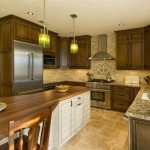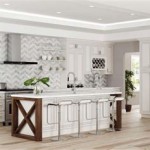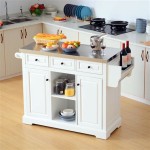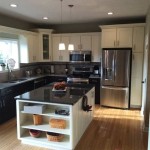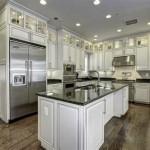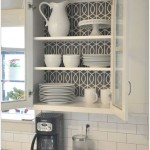The Enduring Appeal of Modern Grey and White Kitchens
The modern grey and white kitchen has become a ubiquitous design choice in contemporary homes, and for good reason. Its enduring appeal lies in its inherent versatility, adaptability, and the clean, sophisticated aesthetic it provides. This color palette transcends fleeting trends, offering a timeless foundation upon which homeowners can build their individual styles and preferences. The combination of grey and white creates a balanced and harmonious space, allowing for the introduction of various textures, materials, and accent colors without overwhelming the overall design.
The popularity of grey and white kitchens stems from their ability to function as a blank canvas. This neutrality allows for easy integration with different architectural styles, from traditional to ultra-modern. The subdued nature of these colors makes them ideal for both small and large kitchen spaces. Light grey and white hues can visually expand smaller kitchens, creating an illusion of spaciousness and airiness. Conversely, darker greys and whites can add depth and sophistication to larger kitchens, preventing them from feeling sterile or impersonal.
Modern grey and white kitchens also provide a practical advantage. The neutral tones are forgiving in terms of dirt and smudges compared to darker or bolder color schemes. While not entirely immune to the inevitable wear and tear of daily use, grey and white surfaces tend to conceal minor imperfections more effectively. This makes them a particularly appealing choice for busy households where maintaining a pristine kitchen environment can be challenging.
Achieving Balance: Grey and White Ratios
One of the key considerations in designing a grey and white kitchen is determining the appropriate ratio of each color. There is no single correct answer, as the ideal balance depends on factors such as the size of the kitchen, the amount of natural light, and the desired overall aesthetic. A predominantly white kitchen with grey accents can create a bright and airy feel, while a predominantly grey kitchen with white accents can convey a sense of sophistication and warmth. Consider the architectural style of the home and the existing color palette of adjacent rooms when making this decision.
For instance, in a small kitchen with limited natural light, opting for predominantly white cabinets with light grey countertops and backsplash can maximize the feeling of openness. Conversely, in a large, well-lit kitchen, darker grey cabinets paired with white countertops and appliances can create a dramatic and stylish statement. Using different shades of grey can add depth and dimension, preventing the space from feeling monotonous. Experimenting with various combinations can help to achieve the desired balance and create visual interest.
Another approach is to use grey and white as the primary colors for the cabinets and countertops, respectively, and then introduce accent colors through accessories, such as bar stools, pendant lights, and kitchen linens. This allows for easy updates and changes over time, without having to undergo a major renovation. A pop of color, such as a vibrant blue or a warm yellow, can add personality and prevent the kitchen from feeling sterile or impersonal.
Material Matters: Textures and Finishes
Successfully executing a modern grey and white kitchen requires careful attention to the selection of materials and finishes. The interplay of different textures and finishes can elevate the design, adding depth and visual interest. Combining smooth, glossy surfaces with rough, matte textures can create a dynamic and engaging space.
For example, pairing glossy white cabinets with matte grey countertops can create a striking contrast. Alternatively, using textured grey cabinetry with smooth white backsplash tiles can add a subtle layer of sophistication. Incorporating natural materials, such as wood or stone, can further enhance the design. Wooden flooring or a wooden island countertop can add warmth and character to the space, while a stone backsplash can create a sense of luxury and permanence.
Metal finishes play a crucial role in complementing the grey and white color scheme. Stainless steel appliances and hardware are a classic choice, offering a sleek and modern look. However, other metal finishes, such as brushed nickel or matte black, can also be used to create a more contemporary or industrial aesthetic. The choice of metal finish should complement the overall design style and the existing hardware in the home.
The type of countertop material also significantly impacts the overall look and feel of the kitchen. Quartz countertops are a popular choice due to their durability, stain resistance, and wide range of colors and patterns. Granite countertops offer a more natural and unique look, while marble countertops exude luxury and elegance. The selection of countertop material should be based on both aesthetic preferences and practical considerations.
Beyond the Basics: Adding Personality and Functionality
While grey and white provide a solid foundation, it is essential to add personal touches to create a kitchen that reflects the homeowner's individual style and meets their specific needs. Incorporating creative storage solutions, stylish lighting fixtures, and unique accessories can transform a generic grey and white kitchen into a personalized and functional space.
Effective storage is crucial for maintaining a clutter-free kitchen. Pull-out shelves, drawer dividers, and pantry organizers can maximize space and improve accessibility. Open shelving can be used to display decorative items, such as cookbooks, pottery, or plants, adding personality and visual interest. Integrating clever storage solutions, such as under-cabinet lighting and built-in spice racks, can further enhance the functionality of the kitchen.
Lighting is another important element that should be carefully considered. A combination of ambient, task, and accent lighting can create a well-lit and inviting space. Pendant lights over the island or breakfast bar can add a stylish focal point, while under-cabinet lighting can illuminate countertops and make food preparation easier. Dimmable lighting allows for adjusting the brightness to suit different moods and activities.
Accessories, such as artwork, rugs, and plants, can add personality and warmth to the kitchen. A colorful piece of art can serve as a focal point, while a patterned rug can add texture and visual interest. Plants can bring a touch of nature into the space, improving air quality and creating a more inviting atmosphere. Choosing accessories that reflect the homeowner's personal style and interests can transform a generic grey and white kitchen into a unique and personalized space.
Ultimately, the key to creating a successful modern grey and white kitchen lies in careful planning, attention to detail, and a willingness to experiment with different colors, textures, and materials. By understanding the principles of design and incorporating personal touches, homeowners can create a kitchen that is both stylish and functional, a space that they will enjoy for years to come.

Designing A Grey And White Modern Kitchen In Seattle Decorcabinets Com
13 Grey And White Kitchen Design Ideas Lily Ann Cabinets

4 Best Grey And White Kitchen Ideas You Will Love This 2025

Modern White Grey Kitchen Design Oakville Toronto By Land Houzz

15 Modern Grey Kitchen Ideas For A Sleek And Sophisticated Look

91 Timeless Grey And White Kitchen Designs Digsdigs

10 Stunning Grey And White Kitchen Design Ideas Decoholic

White And Grey Kitchen A Hardware Update Citrineliving

Gray And White Color In Kitchen Photo Gallery Epic Home Ideas

25 Modern Grey Kitchen Cabinet Ideas Lily Ann Cabinets

